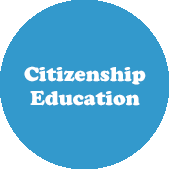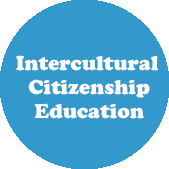Intercultural citizenship education
Intercultural citizenship education combines:
- foreign-language education, where attention is directed to a world beyond the classroom
- citizenship education, where attention tends to be more local – either at school, in the students local communities or even at a national level.
As such, intercultural citizenship education focuses on the intercultural communicative competence of foreign language education and civic action in the community from citizenship education (Byram, Golubeva, Hui & Wagner, 2016; Porto 2016). This results in relevant connections being established with a more global world (beyond the local community and/or country), for example on a European level.
This combination of foci implies that intercultural citizenship education activities and projects developed in the classroom necessarily require three sets of interconnected learning objectives:
- Linguistic objectives
- Intercultural objectives
- Citizenship objectives
References
Byram, M., Golubeva, I., Hui, H., & Wagner, M. (2016) Introduction, in M. Byram, I. Golubeva, H. Hui, & M. Wagner, M. (eds.) From Principles to Practice in Education for Intercultural Citizenship. Bristol: Multilingual Matters.
An example of ICE in Spanish as a foreign language in the USA can be found in this article:
Byram, M. Perugini, D.C., & Wagner, M. (2013). The development of intercultural citizenship in the elementary school Spanish classroom. Learning Languages, Spring/Summer, 16-31.
An example of ICE in upper primary education developed between children in Argentina and Denmark can be found in this article:
Porto, M. (2016) Ecological and intercultural citizenship in the primary English as a foreign language (EFL) classroom: an online project in Argentina. Cambridge Journal of Education, 46:4, 395-415, DOI: 10.1080/0305764X.2015.1064094





